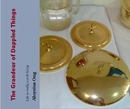Mary? In the whole history of salvation, the very name of the y oung maiden of Nazareth is always never far from the lips of anyone worthy of his or her Scriptural and theological background. The Mary issue has already garnered much heated debate as to her role and importance in the salvific plan of God for his people. The Church honours her and has given her the title of 'Mary, Mother of God and Mother of the Church' which was stamped in chapter 8 of the Second Vatican Council document, Lumen gentium, Dogmatic Constitution of the Church (21 November 1964).
oung maiden of Nazareth is always never far from the lips of anyone worthy of his or her Scriptural and theological background. The Mary issue has already garnered much heated debate as to her role and importance in the salvific plan of God for his people. The Church honours her and has given her the title of 'Mary, Mother of God and Mother of the Church' which was stamped in chapter 8 of the Second Vatican Council document, Lumen gentium, Dogmatic Constitution of the Church (21 November 1964).
This totally gave a whole new look, feel and understanding to the very appreciation of our Lady. No longer would she be misconstrued or misunderstood as a 'demi-goddess' or having special status which seemed even greater than her Son, Jesus Christ. The document clearly shows that Mary has a special place in our Church's life of faith because she shows us how to be, as a Body of Christ, a disciple (one who listens and do), a virgin (one who is holy and chaste) and a mother (one who is life-giving and caring). Mary can show us the way towards all of this because she was one of us, human herself. Mary also shows us the very promise of our own resurrection, mirrored by her Assumption.
As we make our way through our lives, those three dimensions which the Church sees in our Lady, will inevitably impinge greatly upon our conscience and thinking. These may be having an effect on us now. Whatever it may be, the person of Mary as presented in the Bible (however briefly it may be), honoured and celebrated accordingly in the Church's liturgy and being continually debated and discussed in theological, biblical, ecumenical and inter-religious dialogues, will always have an effect on our own lives as a reminder that we can be far more capable than what we usually think we are in fulfilling God's plan for us and for humanity. It only takes to say, like Mary, a fiat.
 oung maiden of Nazareth is always never far from the lips of anyone worthy of his or her Scriptural and theological background. The Mary issue has already garnered much heated debate as to her role and importance in the salvific plan of God for his people. The Church honours her and has given her the title of 'Mary, Mother of God and Mother of the Church' which was stamped in chapter 8 of the Second Vatican Council document, Lumen gentium, Dogmatic Constitution of the Church (21 November 1964).
oung maiden of Nazareth is always never far from the lips of anyone worthy of his or her Scriptural and theological background. The Mary issue has already garnered much heated debate as to her role and importance in the salvific plan of God for his people. The Church honours her and has given her the title of 'Mary, Mother of God and Mother of the Church' which was stamped in chapter 8 of the Second Vatican Council document, Lumen gentium, Dogmatic Constitution of the Church (21 November 1964).This totally gave a whole new look, feel and understanding to the very appreciation of our Lady. No longer would she be misconstrued or misunderstood as a 'demi-goddess' or having special status which seemed even greater than her Son, Jesus Christ. The document clearly shows that Mary has a special place in our Church's life of faith because she shows us how to be, as a Body of Christ, a disciple (one who listens and do), a virgin (one who is holy and chaste) and a mother (one who is life-giving and caring). Mary can show us the way towards all of this because she was one of us, human herself. Mary also shows us the very promise of our own resurrection, mirrored by her Assumption.
As we make our way through our lives, those three dimensions which the Church sees in our Lady, will inevitably impinge greatly upon our conscience and thinking. These may be having an effect on us now. Whatever it may be, the person of Mary as presented in the Bible (however briefly it may be), honoured and celebrated accordingly in the Church's liturgy and being continually debated and discussed in theological, biblical, ecumenical and inter-religious dialogues, will always have an effect on our own lives as a reminder that we can be far more capable than what we usually think we are in fulfilling God's plan for us and for humanity. It only takes to say, like Mary, a fiat.










No comments:
Post a Comment